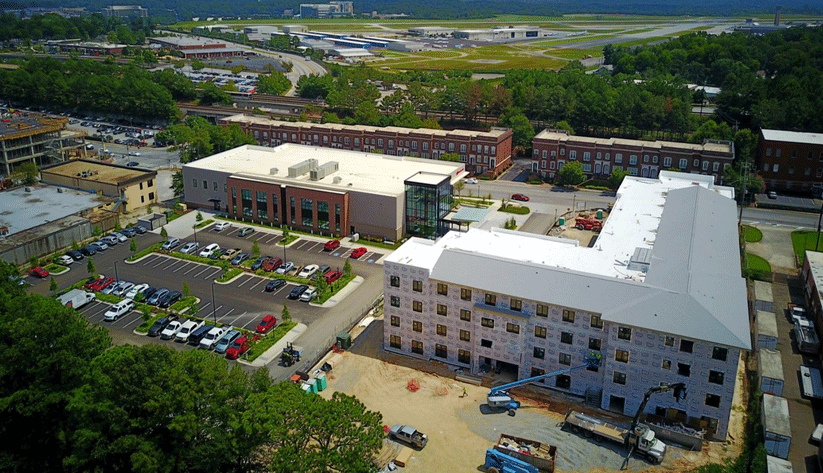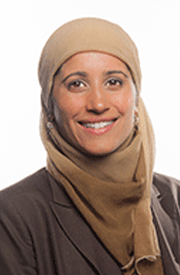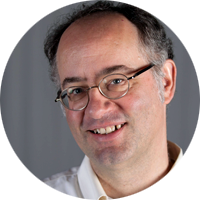Where and how you live can be more important than medical care in long-term health.

A sleek housing complex is rising in Chamblee, Georgia.
Nothing new there. Nearly 1,000 apartment and condominium buildings have been permitted in the past five years in metropolitan Atlanta, according to the U.S. Census Bureau.
But the one in Chamblee is unusual. The Senior Residences at Mercy Park is a collaboration between a nonprofit affordable housing developer, Mercy Properties, and a health care organization, Mercy Care, a part of St. Joseph's Health System. The apartment building is adjacent to Mercy Care–Chamblee, a 40,000-square-foot primary care center for adults and children.
 Sameera Fazili
Sameera FaziliPartnerships between community development organizations and health-related groups are rare in the Southeast. Sameera Fazili of the Federal Reserve Bank of Atlanta's Community and Economic Development (CED) team hopes to change that. A senior adviser in the CED, Fazili is launching an initiative to spur discussion and, ultimately, collaborations among health care providers and community development practitioners in the region, particularly in underserved rural areas.
"Health care and community development organizations often are working in the same places, serving the same populations, but they generally aren't working together," Fazili said. "By working together, they can find ways to create economies of scale and efficiencies."
Focus on social determinants of health
The Atlanta Fed introduced its effort in early November. Along with the Georgia Health Policy Center and the Build Healthy Places Network, the CED sponsored a gathering of health and community development professionals at the Atlanta Fed headquarters. A similar event is scheduled for December in Miami. Meanwhile, Fazili is publishing a discussion paper that explores the challenges and opportunities of bringing a more holistic philosophy to investments in health and general community well-being.
The idea is that up-front investments in areas such as safe, clean housing and access to nutritious food can reduce the incidence of costly chronic health conditions like asthma, diabetes, and high blood pressure. A growing body of research holds that community development efforts improve long-term health and ultimately curb health spending, Fazili said, by focusing on "the social determinants of health."
For example, one study found that simply moving children with disadvantaged backgrounds to full-time, high-quality childcare in their early years significantly reduced risk factors for cardiovascular and metabolic diseases.
Differences in income and location can even affect how long we live. Life expectancy across neighborhoods in metropolitan Atlanta varies by as much as 12 years, and by up to 25 years in New Orleans, Atlanta Fed president Raphael Bostic pointed out during his welcoming remarks at the early November event at the Atlanta Fed. Bostic was citing data from Virginia Commonwealth University and the Robert Wood Johnson Foundation.
"You cannot have a productive workforce if you do not have a healthy workforce," Bostic said in remarks prepared for the Atlanta Fed's health and community development event. "And productivity is what an economy needs to grow."
Further, a 2016 paper by a group of economists and scientists, including former surgeon general David Satcher of Morehouse School of Medicine in Atlanta, posits that a policy approach focused on the social determinants of health can broadly improve standards of living. "The best available evidence suggests that a health policy framework addressing social and behavioral determinants of health would achieve better population health, less inequality, and lower costs than our current policies," the authors wrote.
$3 trillion a year spent mostly on chronic conditions
The intersection of health and community development is not an entirely new interest for the Federal Reserve System. The Federal Reserve Bank of San Francisco in 2010 established a partnership with the Robert Wood Johnson Foundation aimed at improving the social determinants of health.
The economic case is compelling, San Francisco Fed president John Williams explained during a 2016 speech. A huge portion of the nation's roughly $3 trillion in annual health care spending—86 percent of it, according to the U.S. Department of Health and Human Services—is for patients with chronic conditions. Addressing social determinants, Williams said, will likely reduce the occurrence of chronic conditions such as asthma, hypertension, and high cholesterol, and thus save money.
Today, the United States spends more per capita on medical services than do most other nations, yet lags in many health indicators, according to Satcher and his coauthors. For instance, the United States ranks 27th in life expectancy at birth among countries in the Organisation for Economic Co-operation and Development (OECD), a group of developed nations. Sixty percent of premature deaths can be attributed to social, behavioral and environmental factors, according to Lauren Taylor, coauthor of the 2013 book The American Health Care Paradox.
Evidence continues to mount that a range of social and economic factors—among them education, criminal justice, labor, transportation and social welfare—influence health. "Policies in those domains are increasingly understood to be health policies," wrote Satcher and coauthors.
Atlanta Fed building relationships
This research is having an impact on the ground. Health and community development partnerships have become more common, even though they remain rare in the Southeast, Fazili said. A couple of examples: the largest hospital network in California, Dignity Health, operates a $120 million community investment fund with 44 percent of its portfolio in affordable housing. UnitedHealth Group, a large health insurer, has also invested in affordable housing developments.
Legal expertise can be critical in improving housing conditions. Nationally, about 294 health organizations have established partnerships with groups such as legal aid societies to tap their expertise in addressing health-related social needs. Nineteen health care organizations in Florida take part in medical-legal partnerships. No other state in the Southeast counts more than five such programs, according to the National Center for Medical Legal Partnership at George Washington University.
Expanding these programs and establishing others starts with relationships, Fazili said. She and the Atlanta Fed CED team aim to spread word of their efforts among the region's community development and health organizations, including both hospitals and insurance companies. From there, she hopes to gauge interest among the organizations, help facilitate partnerships, and perhaps work with state officials to refine relevant policies.
The Southeast, she figures, is a promising place for programs linking local farmers and neighborhood groups, for instance. Fazili also would like to explore possibilities involving large employers, who have a major stake in the health of their employees.
It will take a few years. But ultimately, Fazili aims to see more community development and health organizations working in concert across the Southeast. Many parts of the region rank poorly in measures of public health, so there is ample opportunity for improvement.
"We'd like to see community developers almost embedded in the health system," Fazili said. "And ideally this will bring additional cost control to the health care system and bend the cost curve lower over time."




